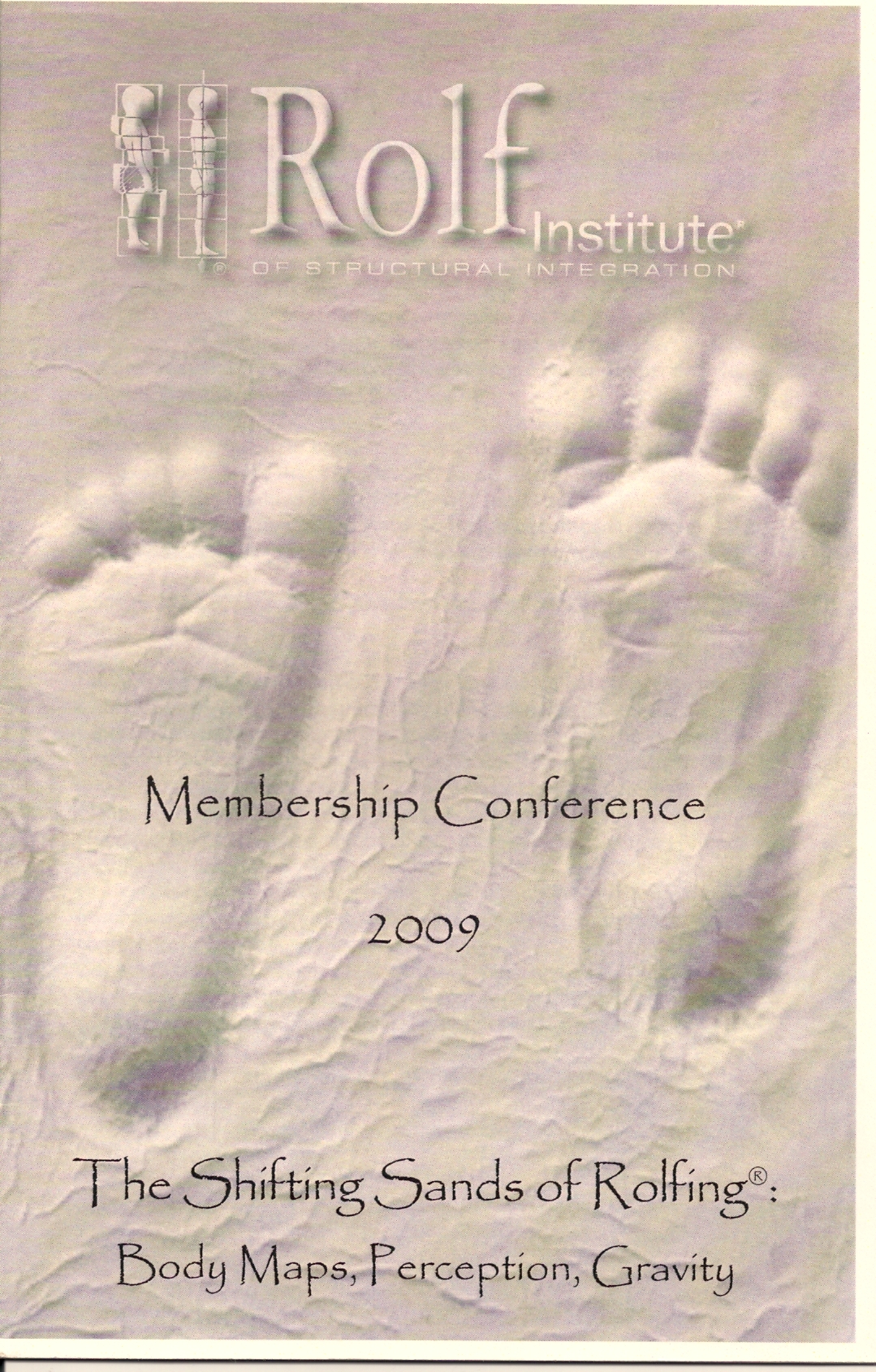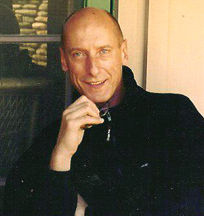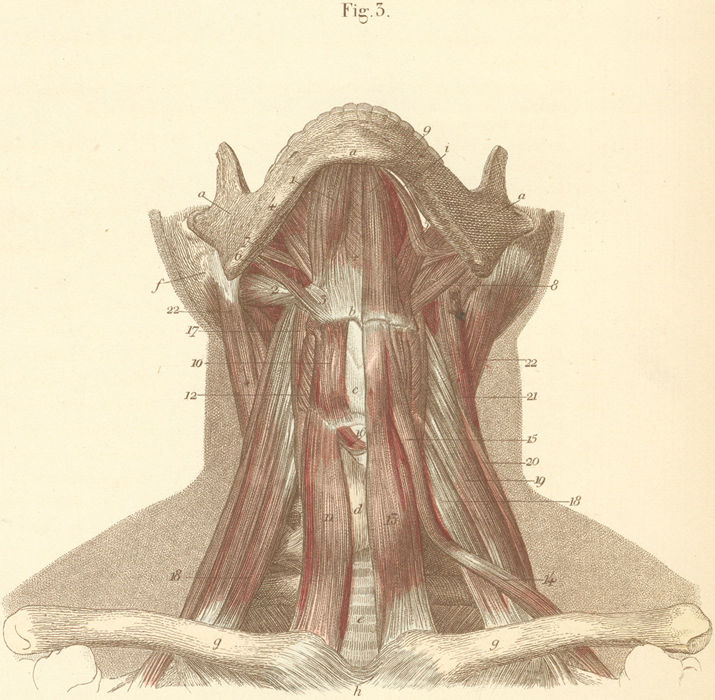2009 Was Divine: Wish You’d Been There?
 The official theme for the newly renamed 2009 Rolf Institute® Membership Conference was “The Shifting Sands of Rolfing®: Body Maps, Perception, Gravity.” The event was formerly known as the annual meeting, but “membership conference” seems a more fitting name given the emphasis on presentations and the sharing of information, as well as the social and community building aspects of the event. Headlining the “Body Maps” category was Sandra Blakeslee, award-winning science writer for The New York Times. She presented the opening keynote Friday evening on her newest book, The Body Has a Mind of Its Own. Blakeslee received the Rolfing® Ten Series for a knee injury she sustained that left her unable to fully flex or extend her knee. She believes that one of the explanations for why Rolfing structural integration works is that when we as practitioners touch people, we are helping to alter their body maps. The concept of body maps originated in the 1930s with neuroscientist Wilder Penfield. He created the first-ever maps of a human being’s somato-sensory and motor cortexes, creating what we know today as the homunculi. In addition to the origins of the body maps concept Blakeslee’s book also includes cutting-edge research on out-of-body experiences, mirror neurons, and phantom limb phenomena. Kudos to Sandra Blakeslee for inspiring us in the structural integration community and providing us with such valuable and timely information.
The official theme for the newly renamed 2009 Rolf Institute® Membership Conference was “The Shifting Sands of Rolfing®: Body Maps, Perception, Gravity.” The event was formerly known as the annual meeting, but “membership conference” seems a more fitting name given the emphasis on presentations and the sharing of information, as well as the social and community building aspects of the event. Headlining the “Body Maps” category was Sandra Blakeslee, award-winning science writer for The New York Times. She presented the opening keynote Friday evening on her newest book, The Body Has a Mind of Its Own. Blakeslee received the Rolfing® Ten Series for a knee injury she sustained that left her unable to fully flex or extend her knee. She believes that one of the explanations for why Rolfing structural integration works is that when we as practitioners touch people, we are helping to alter their body maps. The concept of body maps originated in the 1930s with neuroscientist Wilder Penfield. He created the first-ever maps of a human being’s somato-sensory and motor cortexes, creating what we know today as the homunculi. In addition to the origins of the body maps concept Blakeslee’s book also includes cutting-edge research on out-of-body experiences, mirror neurons, and phantom limb phenomena. Kudos to Sandra Blakeslee for inspiring us in the structural integration community and providing us with such valuable and timely information.
Under the category of “Perception,” Hubert Godard presented the Saturday morning keynote (with Blakeslee in attendance), “From Biomechanics to Body Image: How Perception Shapes The Body.” It had been twenty years since Godard presented at an annual conference, and understandably there was much excitement about his presentation. He started by explaining the difference between body image and body schema. He defines body schema as a physiological construct that is mostly unconscious. Body image, on the other hand, is the more conscious perception of the body. It is about one’s emotional response to how one experiences one’s body; how one feels about one’s physical traits, and how one believes others view oneself. (Blakeslee goes into quite a bit of detail about this in “Dueling Body Maps,” Chapter 3 of her book.)
Godard sees the body schema as a space of action. People can have part of their “space” missing, which can have profound implications for things like scoliosis. One of the ways Godard works with this is by playing with focal and peripheral vision. For Godard, focal vision is a way of perceiving where vision goes to and seeks out the object, whereas peripheral vision allows the space or object to come into our vision. Losing peripheral vision on one side apparently affects the vestibular system on the same side, setting up a cascade of concentric contraction do wn the muscular chain starting with the scalenes. Godard seeks to disrupt this pattern by hiding the focal vision on the affected side using a sticker applied to the central part of the lens of a pair of eyeglasses. In so doing, he seeks to enhance the vestibular function on the affected side, by emphasizing its peripheral vision use, and achieving a functional improvement in that side. Many of those in attendance had our own “perception” challenge with Godard’s lovely French accent. For myself, I heard Godard speak about “a stick” that he put in “a glass.” How relieved I was when we received the sticker and eyeglasses clarification. I had literally imagined a water glass held up to the eye with a pencil inside it!
wn the muscular chain starting with the scalenes. Godard seeks to disrupt this pattern by hiding the focal vision on the affected side using a sticker applied to the central part of the lens of a pair of eyeglasses. In so doing, he seeks to enhance the vestibular function on the affected side, by emphasizing its peripheral vision use, and achieving a functional improvement in that side. Many of those in attendance had our own “perception” challenge with Godard’s lovely French accent. For myself, I heard Godard speak about “a stick” that he put in “a glass.” How relieved I was when we received the sticker and eyeglasses clarification. I had literally imagined a water glass held up to the eye with a pencil inside it!
On the social side of things I found myself a bit nervous about Friday evening’s meet and greet event. Would anyone I know be there? Would people be friendly and want to talk with me? Would I feel included? It turned out I had nothing to worry about. I hadn’t actually realized until this event how many colleagues and friends I’ve come to know over the fifteen years I’ve been practicing Rolfing structural integration. I could barely make it to the food tables without running into someone I knew who I hadn’t seen in a long time and who I really wanted to catch up with.
For give-aways at registration this year, instead of t-shirts, we were given stainless steel water bottles with The Rolf Institute logo on them. How cool is that? My co-attendee commented to me that she’d been intending to purchase exactly such a bottle and now she wouldn’t need to. Another highly coveted give-away were the temporary tattoos of “the little boy logo.” We were limited to one upon registration but I wanted more! By Saturday morning’s presentations I spotted many fellow attendees sporting tattoos on various body parts.
Saturday morning’s breakout sessions were with Tessy Brungardt, Lael Keen, and Robert Schleip. I attended Brungardt’s presentation, “Another View of Neck Work – Techniques for the Visceral Compartment of the Neck.” She began with a nice review of the anatomy start ing with the superficial layer, dropping into the mid-cervical fascial layer, the visceral compartment of the neck itself, and finally the deep cervical layer. Brungardt said she views the hyoid bone as the key to the entire visceral compartment of the neck. She tends to stabilize the hyoid and motion test/feel to assess what the strain pattern she’s working with is organized around. I discovered and made a mental note that I need to review the pharyngeal muscles. Happening at the same time as Brungardt’s lecture were Lael Keen’s “Re-mapping the Feet” and Robert Schleip’s “Fascia as Sensory Organ.” Saturday afternoon’s breakout sessions were with Steve Evanko, William Smythe, and Don Hazen. I split my time between Evanko’s “Extracellular Matrix and the Manipulation of Cells and Tissues” and Smythe’s “Working on the Edge.” Hazen offered us “Neurology of Posture – A Synopsis.”
ing with the superficial layer, dropping into the mid-cervical fascial layer, the visceral compartment of the neck itself, and finally the deep cervical layer. Brungardt said she views the hyoid bone as the key to the entire visceral compartment of the neck. She tends to stabilize the hyoid and motion test/feel to assess what the strain pattern she’s working with is organized around. I discovered and made a mental note that I need to review the pharyngeal muscles. Happening at the same time as Brungardt’s lecture were Lael Keen’s “Re-mapping the Feet” and Robert Schleip’s “Fascia as Sensory Organ.” Saturday afternoon’s breakout sessions were with Steve Evanko, William Smythe, and Don Hazen. I split my time between Evanko’s “Extracellular Matrix and the Manipulation of Cells and Tissues” and Smythe’s “Working on the Edge.” Hazen offered us “Neurology of Posture – A Synopsis.”
Saturday evening was the famous Rolf Institute dance party, a typical and not-so-typical barefoot affair. Brett Linder and Alexi Boshart saw fit to come in costume and entertain us all. Have you ever seen a dancing Rolfer in a bunny suit?
Sunday morning was back to business with a Q & A session for the the advanced faculty panel. Morning breakouts were Hubert Godard’s “Endogenous and Exogenous Origins of Spinal Dysfunction,” where I was fortunate enough to see him demonstrate a little bit of how he works with an eager volunteer from the audience. Liz Gaggini presented “Natural Alignment: How to Recognize and Facilitate Different Fundamental Alignment Patterns” and Nicholas French shared some “Rolfing Odds and Ends.” Sunday afternoon was the actual membership meeting. To entice attendees to stay, a raffle was held with some cool prizes donated by local businesses and Rolfers alike. Proceeds were to benefit The Rolf Institute student library. Sunday afternoon’s closing ceremony was officiated by Barbara Dilley, former soloist with Merce Cunningham Dance Company, who has taught dance and embodiment at Naropa University since 1974. She led us through a simple yet elegant movement ritual to close the conference.
© Carole LaRochelle, 2010.


